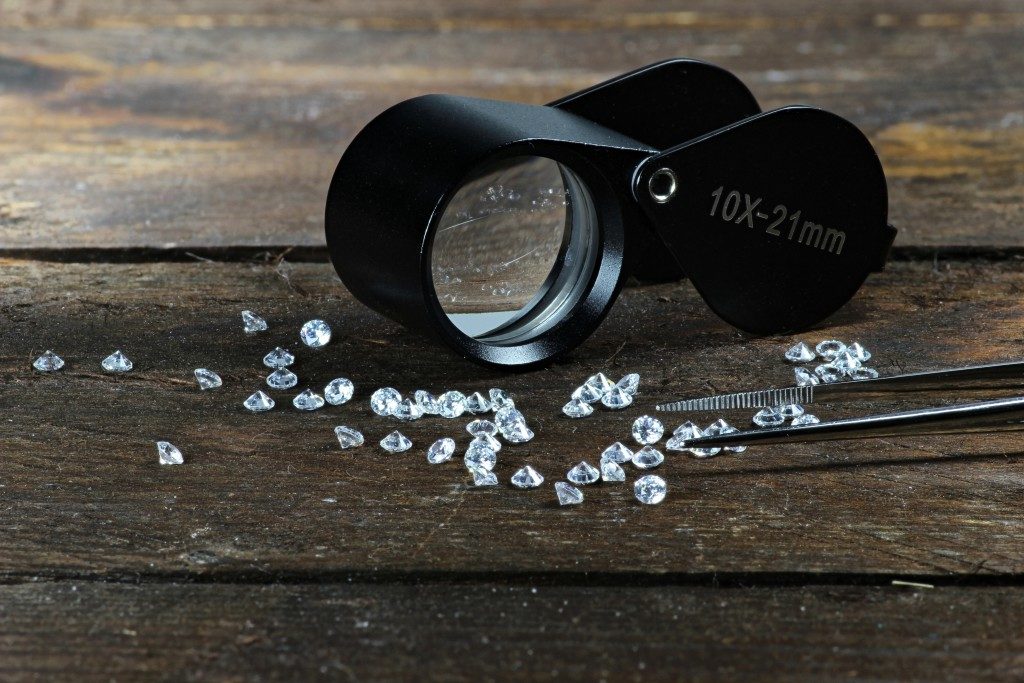When you hear diamonds, you'd think of them as gemstones that are extremely tough, expensive, and of course, last long. Diamonds indeed are the hardest substance on earth. They last billions of years, which is why they're expensive and highly valuable.
But have you already heard of man-made diamonds? They're also called many things such as synthetic, lab-grown, lab-created, artificial, cultivated, or cultured diamonds. Many jewelry stores have been selling this type of diamond. Engagement rings are made affordable because of synthetic diamonds, and you wouldn't be able to tell them apart from a natural diamond.
So, what's the truth about man-made diamonds?
How It's Made

Unlike natural diamonds that are mined deep underground, synthetic diamonds are made in a laboratory through a process called nucleation. Diamondoid, a small piece of diamond, promotes the growth or a larger diamond in this process. Scientists would sprinkle diamondoid onto a silicon wafer and then heat them up with plasma. The plasma would either dissolve the diamondoid or create an environment where the diamondoid can make larger diamonds.
Synthetic diamonds are also composed of carbon and atom structures, like natural diamonds, so they appear exactly the same.
It Counts as a Real Diamond
Despite being grown in a lab, synthetic diamonds are still counted as real diamonds by scientists. This is because of the fact that they share the same chemical and physical properties as a natural diamond, the main difference being only that natural diamonds are formed billions of years ago. So, if you own a piece of jewelry that has a natural diamond in it, that stone was from billions of years ago, and you can see how it still looks so pristine.
The Value
Compared to a natural diamond, the value of a synthetic diamond fluctuates.
Just this year, wholesale prices of lab-grown diamonds have dropped by up to 60%. Continuous improvement in lab technology would also improve the quality of synthetic diamonds and increase its volume, though it contributes to the price fall. The analysis was compared to the flat-screen TV industry, where it started expensive but poor in quality until the demand grew and it eventually improved and became less expensive.
In fact, since 2017, prices of synthetic diamonds have been dropping alarmingly by half. It may not be the best piece of jewelry to invest in all the time, but that doesn't mean synthetic diamonds are something you should forever fret over.
It Lasts Forever, Too
Man-made diamonds are also a woman's best friend. Much like natural diamonds, it is also impossible to damage man-made ones. It ranked 10 on the Mohs' scale, which measures a material's resistance to scratch. This means synthetic diamonds also endure the same wear that natural diamonds can do.

When you say impossible to damage, that means even fires and other natural calamities wouldn't damage your synthetic diamond. Nothing can make its shine and brilliance wear off. So, opting for a synthetic diamond engagement ring isn't that much different from getting one with a natural diamond. It's perfectly suitable and just as special.
The most remarkable characteristic of synthetic diamonds is the fact that it's made in a completely safe way, without harming people and the environment. Mining can be dangerous to both the earth and the miners. In a lab, all procedures are safe and no harm is done to the environment and animals.
Synthetic diamonds are cut precisely, free from impurities, and just as stunning as a natural diamond extracted from deep within the earth. No need to be afraid and ashamed that it's fake. Based on all the facts stated, there is nothing wrong or inauthentic about man-made diamonds, so don't be fooled that all things synthetic aren't real enough.







